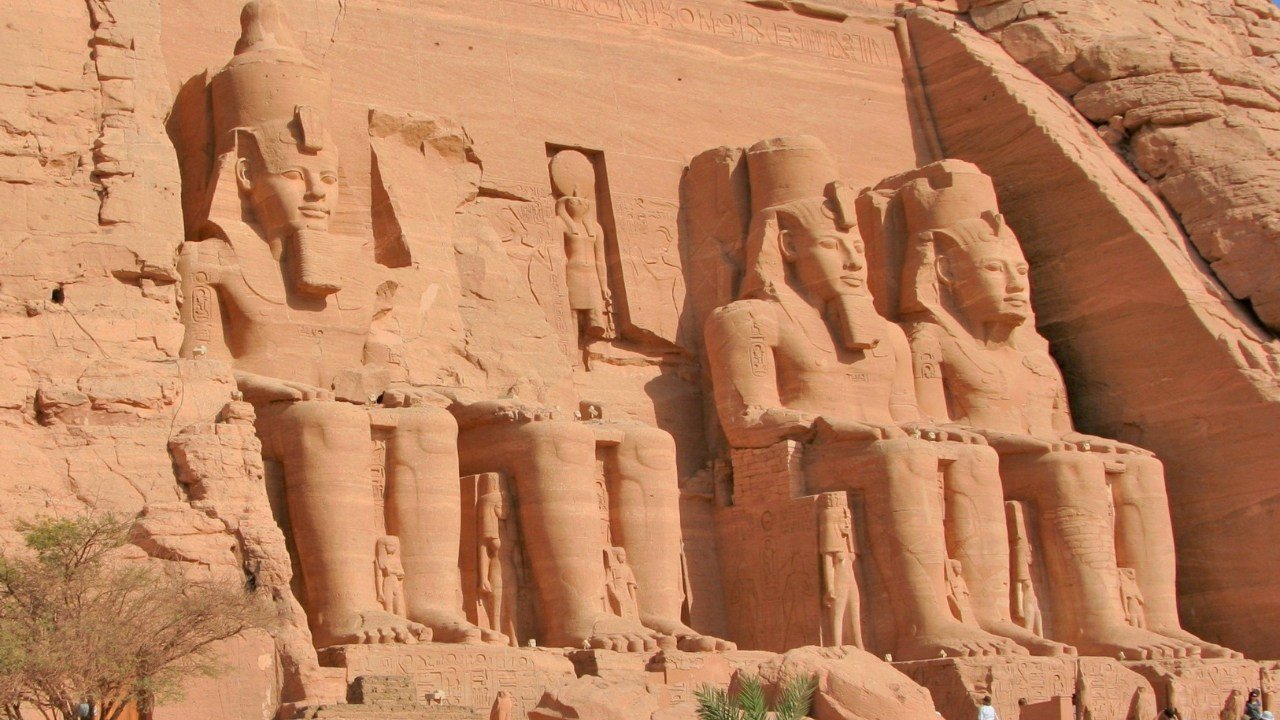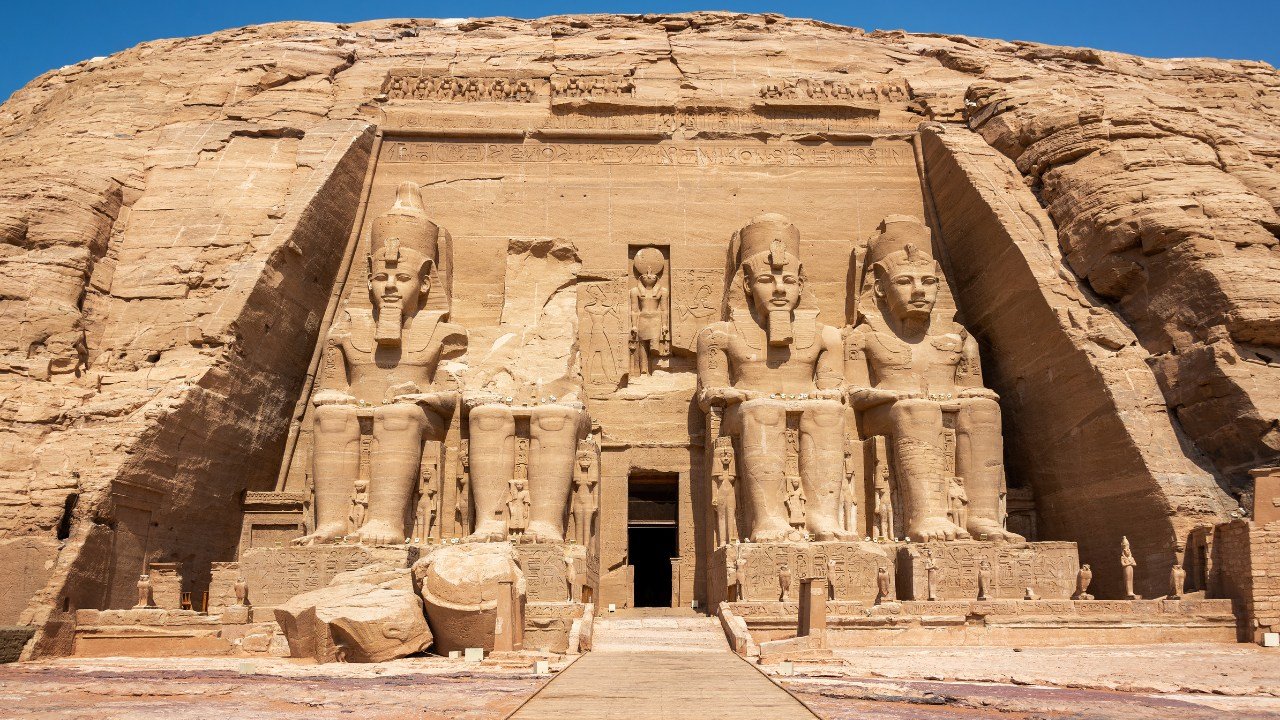Where Ramses still reigns, and silence speaks louder than crowds.
Deep in Egypt’s southern reaches, where the Nile begins to blur into desert, two colossal temples rise from the rock as if carved by time itself. Abu Simbel is more than a monument — it’s a message. One left by Ramses II to echo through eternity, and one you truly feel only when you stand before it, just after dawn, when the sandstone still holds the night’s cool.
A Temple With a Tale
Commissioned in the 13th century BCE, the Great Temple of Ramses II was built not just to honor the gods — but to impress his enemies and immortalize his power. With four towering statues guarding its entrance and intricate battle scenes etched deep inside, the scale alone is staggering.
Next door, the smaller temple for Queen Nefertari, equally exquisite in detail, remains one of the rare ancient shrines devoted to a royal wife — proof of her status, and of a king’s affection cast in stone.
But what makes Abu Simbel truly remarkable isn’t just its age or artistry — it’s that the entire site was relocated in the 1960s to save it from rising waters. Block by block, stone by stone, UNESCO engineers moved the temples uphill, preserving not just history, but the harmony of sunlight that still illuminates Ramses’ face twice a year — on his birthday and coronation day.

The Journey South
Reaching Abu Simbel takes effort — a short flight or a long road from Aswan — but that’s part of its magic. This is not a site you stumble upon. It’s one you choose. And that choice makes the experience feel rare, personal, earned.
We recommend taking the early morning flight, allowing you to arrive just as the light hits the façade, before the desert heat and day-tripper crowds arrive.
With The Uncharted Touch
At The Uncharted Travel, we ensure your Abu Simbel visit is seamless, meaningful, and unhurried. That means:
- Private guided tours that dig deeper than the guidebooks
- Coordinated early-access flights or luxury road transfers from Aswan
- Options for picnic breakfasts by Lake Nasser or stops in Nubian villages en route
- Insight into the relocation feat — one of archaeology’s greatest rescue missions
Why It’s Worth It
Because standing before Abu Simbel isn’t just about seeing statues.
It’s about feeling scale, witnessing legacy, and touching a moment in time that still commands awe.
It’s the final chapter to your journey down the Nile — and one of its most unforgettable.



Comment (0)